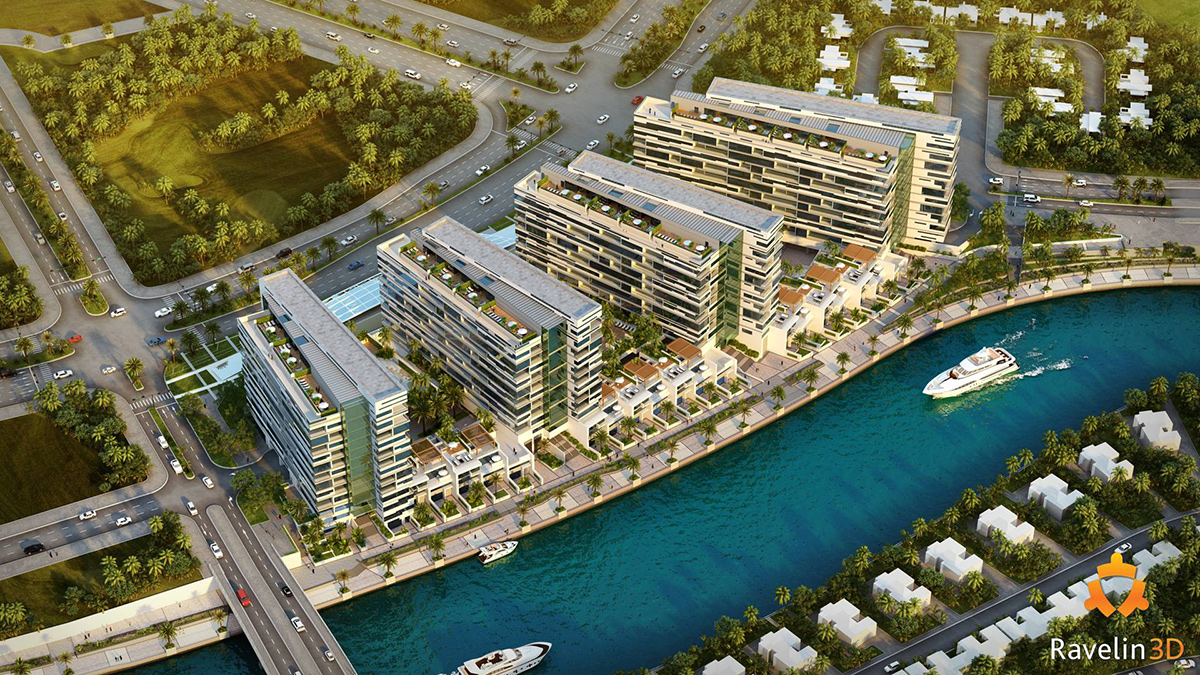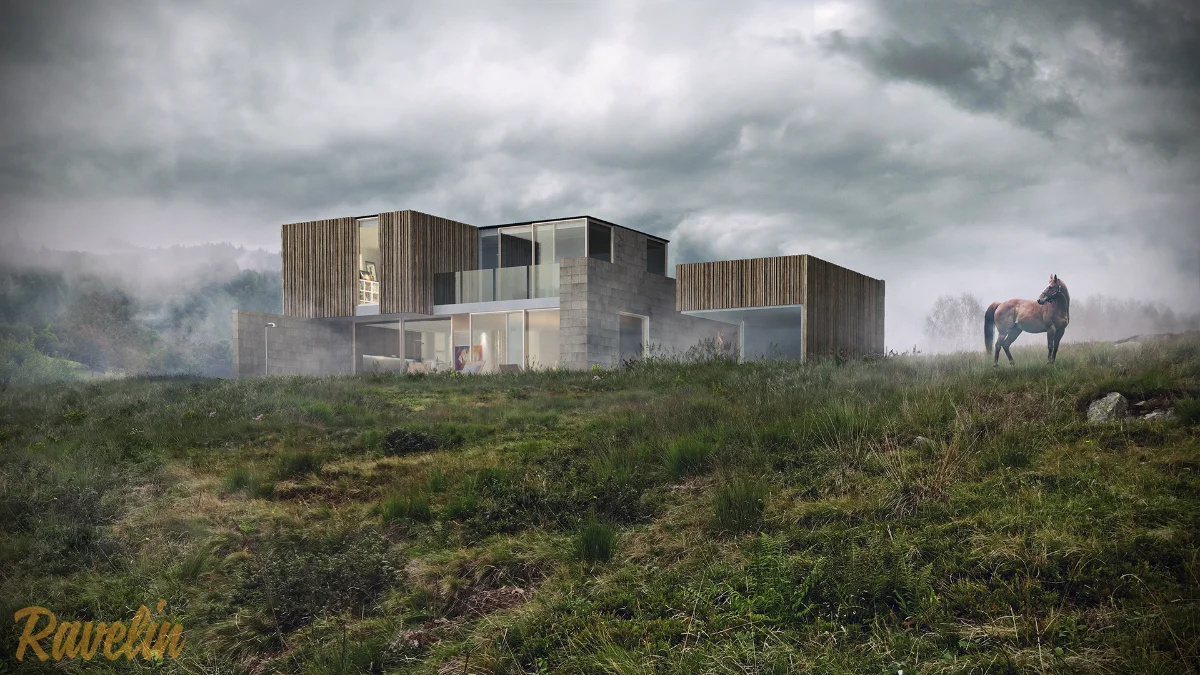How to Create High-Quality 3D Rendering: Key Stages
Imagine you’re standing in an empty lot, staring at a blueprint. Now, picture that blueprint transforming into a photorealistic image of a stunning building, complete with glistening windows, lush landscaping, and warm interior lighting. That’s the magic of 3D rendering. It’s the process of turning architectural plans into breathtaking, lifelike visuals that allow clients, investors, and buyers to see the future before it’s even built.
Introduction to 3D Rendering
The History and Evolution of 3D Rendering
Not too long ago, architects and developers relied on hand-drawn sketches and physical models to showcase their visions. Then came CAD (computer-aided design), revolutionizing the industry with digital precision. But it was 3D rendering that truly changed the game, making it possible to create hyper-realistic visuals, immersive virtual walkthroughs, and interactive real estate experiences.
Key Goals and Applications of Rendering
Why invest in 3D rendering? Simple: it sells. High-quality visuals make properties irresistible, turning concepts into emotional experiences. Whether for real estate marketing, architectural presentations, or design approvals, 3D renderings bridge the gap between vision and reality, eliminating guesswork and bringing confidence to buyers.

How 3D Rendering Works
The Main Stages of the Rendering Process
Every masterpiece starts with a foundation. In rendering, that foundation is 3D modeling. Here, a raw digital skeleton of the building is created using software like SketchUp, 3ds Max, or Blender. Think of it as sculpting with digital clay—every line, surface, and shape defines the future visual.
Texturing and Materials
Now, the magic begins. Textures bring realism to the model, adding details like glossy marble floors, weathered wood panels, and reflective glass. Material libraries (such as those in V-Ray and Corona Renderer) ensure accurate physical properties, from light absorption to surface roughness.
Lighting Setup
Lighting transforms a scene from flat to fascinating. Whether it’s the golden glow of a sunset bouncing off a building’s facade or the crisp artificial lights of a modern interior, correct lighting enhances mood and depth. This step involves placing light sources, adjusting intensities, and mimicking real-world conditions to achieve the perfect balance.
Camera Positioning and Composition
Just like in photography, composition matters. The right camera angles can make a property look inviting, grand, or even cinematic. Wide-angle shots capture spacious interiors, while close-ups highlight luxurious finishes. A well-composed render tells a story without a single word.
Rendering the Image
This is where raw data transforms into a stunning image. Depending on the method—ray tracing, rasterization, or a hybrid approach—the software calculates light, shadows, reflections, and colors to generate a polished visual. High-end engines like V-Ray and Redshift ensure crisp, detailed results.
Post-Processing and Final Adjustments
The final touch. Much like photo editing, post-processing enhances the image with color correction, contrast adjustments, and minor retouching. Sometimes, elements like lens flares, depth of field, or even a subtle vignette are added for extra realism.

Types of 3D Rendering
Photorealistic Rendering
This is the gold standard in real estate. Every detail, from the way light filters through curtains to the reflections on polished floors, mimics reality. The goal? To make the viewer believe they’re looking at a photograph, not a render.
Non-Photorealistic and Stylized Rendering
Not all renders need to be ultra-realistic. Some projects benefit from a more artistic approach—sketch-like outlines, watercolor textures, or minimalistic visuals that emphasize form over detail.
Interactive Rendering
Why settle for static images when clients can explore? Interactive rendering allows for real-time changes—switching wall colors, adjusting furniture layouts, or even experiencing different times of the day with dynamic lighting.
Real-Time Rendering
Used in VR tours and architectural simulations, real-time rendering allows users to walk through a digital space as if they were physically there. Think of it as the video game version of real estate marketing.

Core 3D Rendering Techniques
Rasterization
Fast and efficient, rasterization is used in video games and real-time applications. It converts 3D models into 2D images by calculating how pixels should appear based on perspective and lighting.
Ray Tracing
The holy grail of realism. Ray tracing simulates real-world light behavior, producing stunningly accurate reflections, shadows, and refractions. It’s the reason why renders can look indistinguishable from real photographs.
Hybrid Rendering
A mix of rasterization and ray tracing, hybrid rendering balances speed and quality. This approach is popular in architectural visualization, where both efficiency and realism matter.
Global Illumination
This technique calculates how light bounces off surfaces, ensuring realistic indirect lighting and soft shadows. It prevents scenes from looking flat and artificial.

Popular Rendering Engines and Software
V-Ray
A powerhouse for photorealistic rendering, widely used in real estate visualization.
Corona Renderer
Known for its user-friendly workflow and stunning output.
Unreal Engine
Perfect for real-time rendering and interactive experiences.
Blender Cycles and Eevee
A free yet powerful alternative, offering both ray tracing and real-time rendering.
Arnold Renderer
Industry favorite for film-quality visuals.
Redshift
A GPU-accelerated renderer, ideal for handling complex scenes efficiently.

Where 3D Rendering Is Used
Architectural Visualization
Helping architects and developers sell ideas before construction begins.
Game Development and Video Games
Creating immersive digital worlds with lifelike graphics.
Film Industry and Animation
From Pixar movies to CGI-heavy blockbusters, rendering brings stories to life.
Virtual and Augmented Reality
Enhancing interactive experiences for real estate and beyond.
Advertising and Marketing
Crafting visuals that turn browsers into buyers.
Industrial and Product Design
Prototyping and showcasing new products in stunning detail.

Key Factors Affecting Render Quality
Lighting and Shadows
Well-balanced lighting separates good renders from great ones.
Polygon Optimization in Models
Too many polygons slow down rendering, too few reduce detail. Balance is key.
Texture and Material Quality
Sharp, high-resolution textures elevate realism.
Balancing Quality and Rendering Speed
Finding the sweet spot between render time and final output quality.
Scene Optimization
Cleaning up unnecessary elements to improve efficiency.
Cloud Rendering Services
Leveraging remote computing power for faster results.
Hardware Acceleration (GPU vs. CPU)
Choosing the right hardware for the job.
Layer-Based Rendering and Batch Processing
Rendering in parts to streamline workflows.
AI and Machine Learning in Rendering
Automating tedious tasks and enhancing realism.
Real-Time Rendering Advancements
Pushing the boundaries of instant visualization.
Neural Networks for Image Enhancement
AI-powered upscaling and noise reduction for sharper renders.

Conclusion
Key Takeaways
3D rendering is the future of real estate marketing—turning blueprints into emotions.
Tips for Beginners in 3D Rendering
Master lighting, optimize your workflow, and always push creative boundaries.




